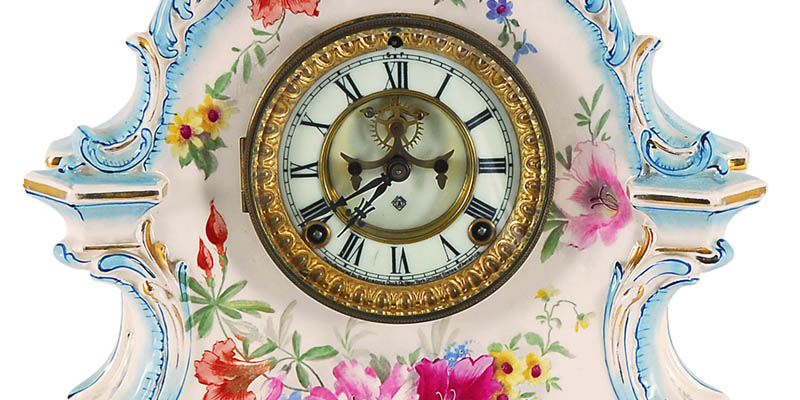The history of clockmaking in America defines the ambitions, inventive genius and entrepreneurial spirit of the colonies. Deprived of the traditional materials required and the cottage industry supporting the clock and watch business in England and Europe, early New England clockmakers created ingenious, affordable and reliable clocks from the one resource they had in abundance – wood.
These wooden clockworks were so well engineered and constructed that thousands of them are still running perfectly after close to 200 years. This struggling but determined clockmaking enterprise emerged into one of the first important manufacturing industries in the New World, pioneering concepts such as interchangeable parts, mass production and a myriad of successful marketing methods.
By the 1830’s it became feasible to produce brass movements in the colonies which by 1840 would become the standard of industry. The machining and manufacturing techniques developed in the clock and watch industry laid the groundwork for the commercial avalanche that spawned the industrial revolution and the eventual miracle that would culminate in creating the wealthiest nation on earth.
Today, collectors of American antique clocks enjoy a window of opportunity to acquire early American clocks of nearly every type and period for a fraction of their intrinsic value. With the exception of extremely rare clocks by important makers, good American clocks are affordable to almost anyone.
Makers such as Seth Thomas, Ansonia, E. Howard, Chelsea, Gilbert, Waterbury and Sessions produced millions of clocks in the 19th century. These clocks were so well made and so respected by their owners that a high percentage of them have survived and can still be purchased reasonably in today’s market.
Even the very early woodworks and first generation brass movement clocks by the legendary pioneers of American horology in the 1810 to 1850 period can be found for remarkably affordable prices. These include clocks by Eli Terry, Chauncey Jerome, Birge and his many partners, Joseph Ives, Simon Willard, Atkins, Seth Thomas, Silas Hoadley, Riley Whiting, Forestville and Ingraham.
The sheer pleasure and enrichment these wonderful horological specimens offer their owners far exceeds the monetary cost. The fact that they appreciate in value consistently over the years is a delightful and profitable added benefit.
Solvang Antiques has recently acquired a substantial private collection of American clocks, many of which can be viewed on their website. Among the many treasures of this diverse collection are double-dial calendar clocks, banjo clocks, weight driven regulators, hard to find premium models of Victorian parlor and wall clocks, early electric self winding clocks and many rare astronomical-dial precision regulators by E. Howard, George A. Jones and Seth Thomas.
Nearly every 19th century American maker is represented and most of these clocks have survived with a high degree of originality, retaining beautiful reverse painted glasses, original dials and pendulums. The collection includes hard to find examples such as E.N. Welch, Patti Gerster & Khedive parlor clocks, oversized Seth Thomas, Waterbury, E.N. Welch & Gilbert premium parlor models, Brewster iron movement steeple, Atkins & Chauncey Jerome fusee shelf clocks, Fashion, Waterbury and E.N. Welch double-dial calendar clocks, E. Howard tower clocks, E. Howard, Pacific Electric & International self winding clocks, and Waterbury & Seth Thomas weight-driven regulators.
We are excited and pleased to have landed this wonderful collection and hope that many of you will find this a golden opportunity to add a few special pieces to your horological portfolio.

